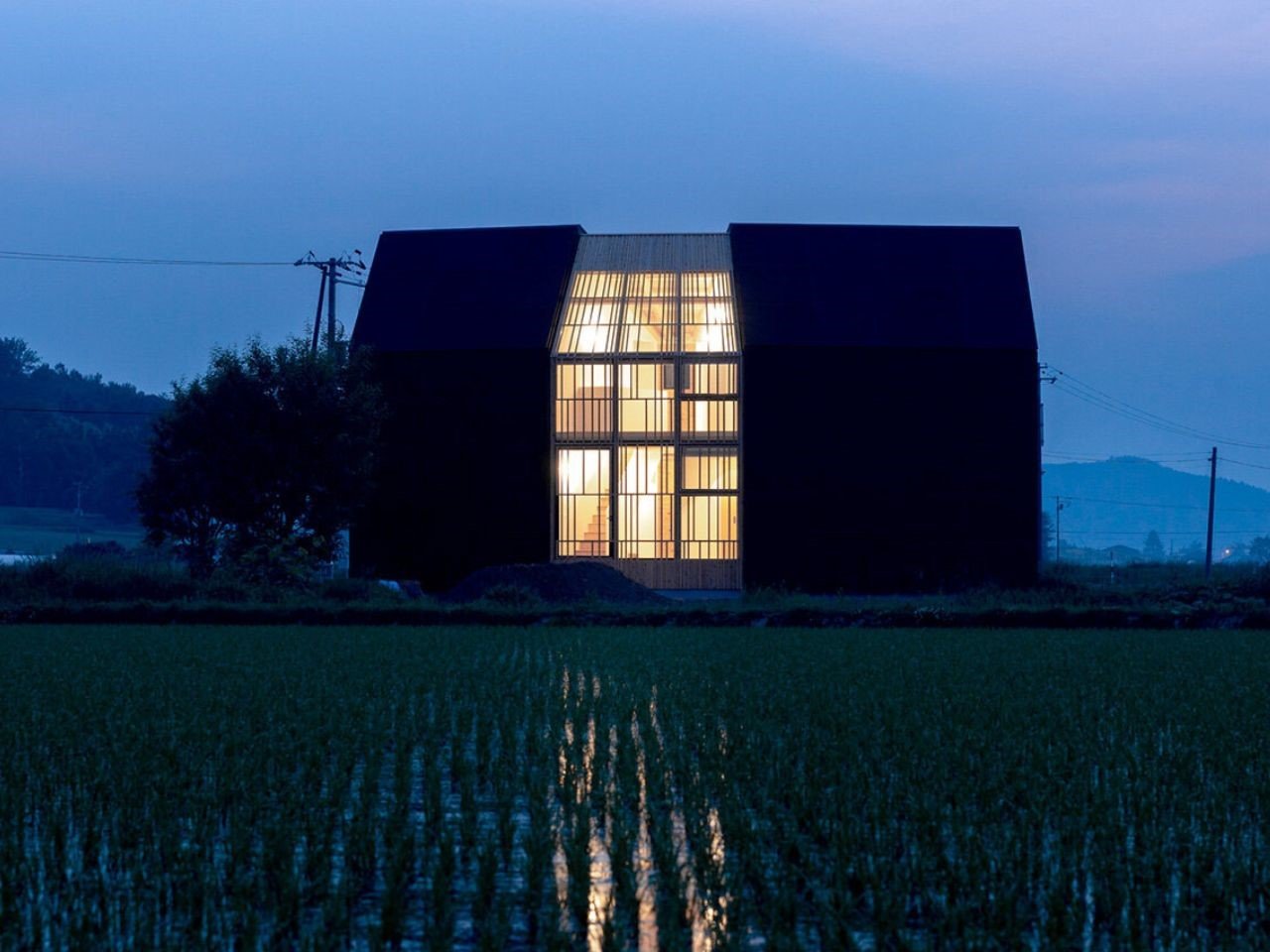Florian Busch Architects (FBA) have shattered conventional notions of home design with House W, a groundbreaking architectural statement nestled in Nakafurano, Hokkaido. It is a residence, but also a self-sustaining powerhouse, producing nearly twice the energy it consumes – an extraordinary achievement in a region infamous for its unforgiving winters. But the real secret to this energy-positive home isn’t just cutting-edge technology; it’s a radical reimagining of what a house should be.
For nearly a century, architecture has followed Le Corbusier’s vision of a house as “a machine for living in,” a philosophy rooted in efficiency and control. Florian Busch, however, sees a home differently. He believes that “a house is a plant for living with.” Like a plant, House W doesn’t merely exist in its environment, it thrives in it. It absorbs sunlight, harnesses water, and adapts to seasonal changes, forming a sustainable, self-sufficient ecosystem for the family that inhabits it.
Designer: Florian Busch Architects
Defying the still-prevalent trend of urban migration, the clients, a young Tokyo family, approached FBA to design their dream home on the western edge of the Furano Plateau. This 25-km-long and 5-km-wide strip in the heart of Hokkaido is famed for its deep powder-snow winters and stunning summer landscapes. Their vision was bold: a home completely independent from the local power grid, capable of generating at least as much energy as it consumes – net zero.
The finished result goes even further! Over a year, House W produces almost twice the energy it consumes, making it FBA’s first building to achieve such a feat. Counterintuitively, the solution does not rely on compactness but on breaking the structure apart.
The site, once occupied by a farmer’s barn, sits amidst active farmland, surrounded by rice paddies, asparagus fields, and irrigation channels. Rather than impose itself on the landscape, House W integrates seamlessly with it.
Instead of a singular solid structure, the house is split into two rotated volumes, framing breathtaking views of the Tokachi mountain range, rolling hills, and Furano’s ski slopes. This fragmented design creates an interstitial space—a natural buffer that regulates temperature and airflow. In summer, adjustable louvers cast cooling shadows; in winter, they welcome the sun’s warmth.
Most energy-efficient homes treat solar panels as an afterthought—an accessory added to the roof in the final stages of design. House W, however, weaves solar performance into its very essence. Its “solar skin,” a sleek black exterior, is more than just a striking visual choice. Beneath the surface, seamlessly embedded photovoltaic panels transform the entire house into an energy-generating system. The result? A home that not only sustains itself but also contributes energy back to the grid.
Energy efficiency at House W extends beyond solar panels. The home taps into an underground water source, using a heat pump system to generate underfloor heating and hot water. In a region where winters can be unforgiving, this natural, year-round thermal stability is transformative.
House W wasn’t built overnight. Designed in phases to accommodate market fluctuations, its modular structure allows for future expansion without disturbing the existing framework. Even before the main house was completed, the family added a shed and a workshop, early additions that paved the way for potential future expansions. This flexibility is more than just practical; it embodies a deeper philosophy. A home, like a plant, should have the ability to grow.
As climate concerns drive architecture toward greater sustainability, House W emerges as a prototype for the future. Rather than resisting nature, it collaborates with it—absorbing sunlight, harnessing water, and evolving with the seasons.
The post This Split-Form Home in Hokkaido Produces Twice the Energy It Consumes first appeared on Yanko Design.

